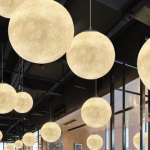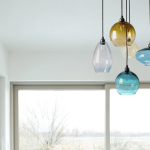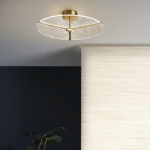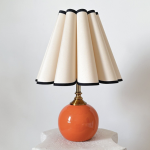
Introduction
Wabi Sabi is a Japanese philosophy that has been applied in architecture, design, and art for centuries. In recent years, this concept has become increasingly popular in the interior design and home decor industries. And now, it is finding a place in the hearts of many chefs and food enthusiasts, who seek to bring the same sense of simplicity, natural elegance, and rustic charm into their kitchens.
In this article, we will explore the modern Wabi Sabi kitchen, its key principles, and how you can incorporate them into your own kitchen to create a peaceful and harmonious space where you can cook, relax, and enjoy the simple pleasures of life.
What is Wabi Sabi?
Wabi Sabi is a Japanese aesthetic concept that celebrates imperfection, transience, and simplicity. It emphasizes the natural beauty of the imperfect, the incomplete, and the unrefined, rather than the glossy, the polished, and the perfect.
The word “Wabi” refers to a sense of humble, quiet, and understated elegance, while “Sabi” refers to the beauty that comes with the passage of time, the wear and tear of life, and the impermanence of all things.
In a Wabi Sabi space, you can see the beauty in the cracks of an old teacup, the roughness of a weathered wooden beam, the asymmetry of a handmade pottery bowl, or the pale patina of a vintage metal tray. It is a space that embraces the natural world, the seasons, and the changing moods of light and shadow.
The Key Elements of a Modern Wabi Sabi Kitchen
So, how can you create a Wabi Sabi kitchen that is both functional and beautiful? Here are some key elements to consider:
Natural materials and textures
Wabi Sabi emphasizes the use of natural materials and textures, such as wood, stone, clay, linen, and bamboo. These materials have a warm and organic feel that brings a sense of grounding, comfort, and authenticity to your kitchen. They also have a timeless quality that transcends fads and trends.
Consider using wooden cutting boards, clay dishes, linen towels, and bamboo utensils. Choose reclaimed, salvaged, or recycled materials whenever possible. Don’t be afraid to mix and match textures and colors to create a layered and nuanced look.
In a Wabi Sabi kitchen, form follows function. The design is simple, minimalist, and focused on the essentials. Every item has a purpose and a place. There are no extraneous decorations, clutter, or excess.
Think about the flow of your kitchen, and how you can optimize it for efficiency and ease. Consider the arrangement of your appliances, the storage of your utensils and ingredients, and the lighting of your workspace. Use open shelves, hanging racks, and natural light to create a sense of spaciousness and airiness.
Wabi Sabi celebrates the beauty of age, wear, and imperfection. Instead of hiding scratches, dents, and other signs of use, it embraces them as part of the story and the history of the object.
Look for vintage or antique items that have a patina and character, such as copper pots, cast iron skillets, or enamelware bowls. Or, you can create your own patina by using natural materials and ingredients, such as vinegar, salt, or lemon juice, to age or distress your items. Remember, the goal is not to create a pristine and perfect look, but to cultivate a sense of natural charm and warmth.








